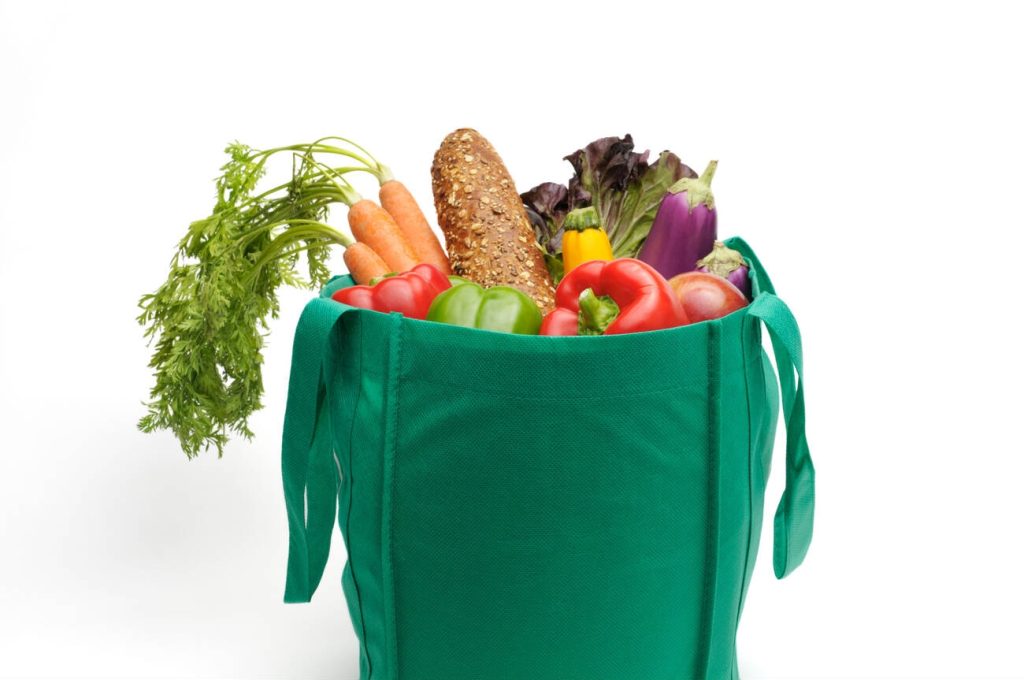Sustainable foods have a low carbon footprint and don’t contribute to environmental issues like deforestation or overfishing. But here’s the catch – not all vegan options meet the sustainability criteria. So, what are these eco-friendly foods? From pulses to leafy greens, mushrooms to locally grown fruits, there are plenty of delicious choices that not only benefit your health but also help protect our planet. Let’s dive in!
Definition and Importance of Sustainable Foods
Sustainable foods have a low carbon footprint and do not contribute to deforestation, water scarcity, overfishing, or loss of biodiversity. Sustainable food practices consider the environmental impact of food choices and prioritize the health benefits of sustainable foods. By adopting sustainable farming methods, we can play a significant role in combating climate change. Choosing to consume sustainable foods supports agricultural practices that reduce greenhouse gas emissions and conserve natural resources. These practices promote soil health, biodiversity, and water conservation. Additionally, sustainable foods provide essential nutrients for a healthy life while minimizing the negative impact on our planet. Incorporating more sustainable food choices into your diet is an effective way to make a positive difference for both your health and the environment.
Pulses
Pulses like lentils, chickpeas, peas, and beans are packed with protein and have a low fat content. Here are four reasons why you should incorporate pulses into your diet:
- Benefits of pulses: Pulses help reduce the risk of chronic diseases like heart disease and diabetes. They are also rich in fiber, which aids digestion and promotes satiety.
- Nutritional value of pulses: Pulses are nutrient-dense foods that provide essential vitamins and minerals such as iron, folate, and potassium. They are an excellent source of plant-based protein for vegans.
- Cooking with pulses: Pulses can be used in various recipes like soups, stews, salads, and even desserts. They add texture and flavor to dishes while boosting their nutritional value.
- Environmental impact of pulse production: Compared to animal-based protein sources, pulse production has a lower carbon footprint as they require less land and water resources. Incorporating more pulses into your diet can contribute to sustainable food choices.
Leafy Greens
Leafy greens, such as spinach and kale, are nutrient-rich and offer various health benefits. They are not only delicious but also versatile in the kitchen. Here is a table summarizing the growing methods, nutritional benefits, culinary uses, environmental impact, and food waste reduction of leafy greens:
| Growing Methods | Nutritional Benefits | Culinary Uses | Environmental Impact | Food Waste Reduction | |
|---|---|---|---|---|---|
| Leafy Greens | Can be grown organically or conventionally | Rich in vitamins A, C, E, and K | Used in salads, soups, stir-fries | Have low carbon emissions | Can be composted |
Leafy greens can be grown using both organic and conventional methods. They are packed with essential vitamins like A, C, E, and K that support overall health. In the culinary world, leafy greens are incredibly versatile and can be used in salads, soups, or stir-fries to add a fresh and vibrant flavor.
From an environmental standpoint, leafy greens have low carbon emissions during their growth process. This means they have a smaller impact on greenhouse gas emissions compared to other crops. Additionally, when it comes to reducing food waste, leafy greens can be easily composted after use.
Overall leafy greens are a nutritious choice for your diet while also being environmentally friendly.
Mushrooms
Mushrooms are a versatile ingredient that can be used as meat substitutes or added to meat dishes for extra bulk and flavor. Here are four reasons why you should consider incorporating mushrooms into your everyday meals:
1) Mushrooms as meat substitutes: With their meaty texture and umami flavor, mushrooms make a great substitute for meat in vegetarian or vegan dishes. They can be grilled, sautéed, or even used to make mushroom burgers.
2) Nutritional benefits of mushrooms: Mushrooms are packed with nutrients like B vitamins and vitamin D. They also contain fiber and antioxidants, which help support a healthy immune system.
3) Environmental impact of mushroom production: Mushroom cultivation techniques have a low environmental impact. They require less water and energy compared to other crops, making them an eco-friendly choice.
4) Incorporating mushrooms into everyday meals: You can add sliced mushrooms to omelettes, stir-fries, pasta dishes, or even pizzas. They can also be stuffed with cheese or other fillings for a delicious appetizer or side dish option.
Locally Grown Fruits
When it comes to sustainable eating, one option you should consider is incorporating locally grown fruits into your diet. By choosing fruits that are grown in your local area, you can reduce your carbon footprint and support the local economy. Imported fruits often have a higher water footprint and require refrigerated transport, which contributes to greenhouse gas emissions. To further minimize your impact, try to consume seasonal fruits when they are readily available. Additionally, freezing fresh fruit during the summer months allows you to enjoy them year-round without relying on imported options. Building more ripening facilities in your area can also reduce the need for long-distance transportation and ensure that locally grown fruits reach their optimal ripeness.
| Benefits | Tips |
|---|---|
| Reduce carbon footprint | Choose locally grown fruits |
| Seasonal fruit consumption | Freeze fresh fruit during summer |
| Water footprint of imported fruits | Support building more ripening facilities |
Seaweed
Seaweed is a versatile and nutritious ingredient that can be used as vegan alternatives to gelatine. Here are four reasons why seaweed should be on your sustainable food radar:
- Nutritional benefits: Seaweed is packed with protein, omega-3 fatty acids, vitamin C, antioxidants, and iodine. It offers a range of health benefits and essential nutrients for a balanced diet.
- Environmental impact: Seaweed plays a crucial role in the environment by producing around 50% of the Earth’s oxygen. It also absorbs carbon dioxide, nitrogen, and phosphate, helping to convert agricultural run-off.
- Culinary uses: Seaweed adds flavor and texture to various dishes such as salads, soups, sushi rolls, and even desserts. Its versatility makes it an exciting ingredient to experiment with in the kitchen.
- Seaweed farming: Unlike traditional agriculture, seaweed farming requires no freshwater or land use. It can be harvested multiple times a year, providing alternative income for coastal communities.
Seaweed truly shines as a sustainable alternative due to its nutritional value, positive environmental impact, culinary uses, and efficient farming methods.
Mussels
If you’re looking for a sustainable and nutritious seafood option, mussels are a great choice. Mussels have a minimal environmental impact and provide numerous nutritional benefits. They contain more protein than many meat and plant crops and are rich in omega-3s, iron, zinc, and magnesium. Not only are mussels a great source of protein, but they also help clean up the oceans by filtering water and removing waste particles. Farming methods for mussels ensure their sustainability while providing habitat for other sea creatures. To give you an overview of the environmental impact, nutritional benefits, farming methods, shellfish sustainability, and mussels as a protein source, here is a table:
| Mussels | |
|---|---|
| Environmental Impact | Minimal |
| Nutritional Benefits | High in Protein |
| Farming Methods | Sustainable |
| Shellfish Sustainability | Provides Habitat |
| Mussels as Protein Source | Rich in Omega-3s |
Mussels offer a delicious way to incorporate sustainable seafood into your diet while reaping the health benefits they provide.
Cereals and Grains
Cereals and grains are a nutritious and sustainable food choice that offer dietary fiber, minerals, vitamins, and antioxidants. They play a crucial role in a balanced diet and have numerous benefits for both your health and the environment. Here are four reasons why you should include cereals and grains in your meals:
- Benefits of whole grains: Whole grains like quinoa, spelt, and buckwheat provide essential nutrients such as fiber, B vitamins, iron, and magnesium. They help reduce the risk of heart disease, diabetes, and certain types of cancer.
- Impact of monoculture on soil health: Monoculture practices used in growing cereals can deplete soil nutrients and increase the reliance on pesticides and herbicides. Diversifying grain crops can improve soil fertility and reduce the need for chemical inputs.
- Nutritional value of alternative grains: Alternative grains offer a wider range of nutrients compared to traditional ones. For example, teff is high in calcium while amaranth is rich in protein. Incorporating these grains adds variety to your diet.
- Sustainable farming practices for cereals and grains: Sustainable farming methods like crop rotation, cover cropping, and organic farming can minimize environmental impact while maintaining crop productivity. These practices promote soil health, conserve water resources, reduce greenhouse gas emissions, and support biodiversity.
Grass-fed Beef
To make a sustainable choice, consider incorporating grass-fed beef into your diet as it can have a positive impact on both your health and the environment. Grass-fed beef helps reduce its carbon footprint by promoting regenerative farming practices that improve soil health. Unlike conventionally raised cattle, grass-fed cows graze on natural pastures and their hooves churn up the soil, allowing it to absorb more carbon from the atmosphere. Additionally, grass-fed beef is supported by natural fertilizers from cows, reducing the need for chemical fertilizers that can harm the environment. By choosing grass-fed beef, you are not only enjoying a delicious and nutritious protein source but also contributing to a carbon-negative or carbon-neutral impact on our planet. So next time you’re at the grocery store or dining out, opt for grass-fed beef and make a sustainable choice for yourself and the environment.
Sustainable Seafood
When choosing seafood, opt for sustainable options like fish with MSC or ASC certifications to support the health of our oceans and fish populations. Here are four reasons why sustainable seafood is important:
- Ocean Conservation: By choosing sustainable seafood, you contribute to the conservation of our precious marine ecosystems. Sustainable fishing practices ensure that fish populations can thrive and maintain a healthy balance in their habitats.
- Sustainable Fishing Practices: Sustainable seafood comes from fisheries that use methods designed to minimize environmental impact. These practices reduce bycatch, habitat damage, and overfishing, helping to preserve marine biodiversity.
- Seafood Certifications: Look for seafood with certifications like MSC (Marine Stewardship Council) or ASC (Aquaculture Stewardship Council). These labels ensure that the seafood has been sourced sustainably and meets strict criteria for responsible fishing or farming practices.
- Impact on Marine Ecosystems: Unsustainable fishing practices can have devastating effects on marine ecosystems, leading to declines in species populations and disrupting the delicate balance of ocean life. Choosing sustainable seafood helps protect these ecosystems for future generations.
Additionally, consider sourcing your seafood locally whenever possible. This reduces transportation emissions and supports local communities who rely on a healthy ocean ecosystem for their livelihoods.

